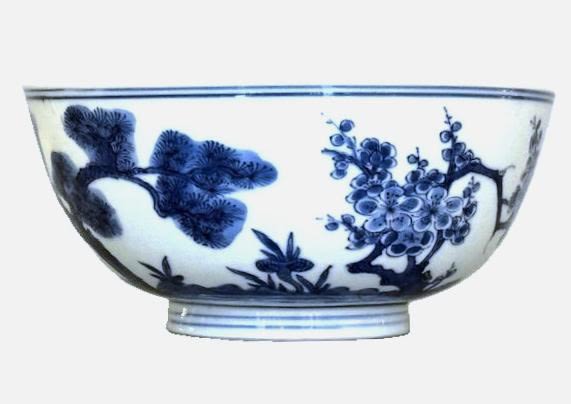A CHINESE BLUE AND WHITE 'THREE FRIENDS OF WINTER' BOWL, Kangxi (1662 – 1722)
Diameter: 15.8cm (6 ¼ in)
BJ49
BJ49
The deep rounded sides rising to the rim, freely painted on the exterior in varying shades of cobalt blue with the 'Three Friends of Winter', pine, prunus and bamboo, all...
The deep rounded sides rising to the rim, freely painted on the exterior in varying shades of cobalt blue with the 'Three Friends of Winter', pine, prunus and bamboo, all above a continuous band of lingzhi fungus at the foot of the bowl, the interior with a central medallion painted with a grouping of the same plants, the base with the six character mark of Jiajing in underglaze blue within a double circle.
Literature
This bowl with the decoration known as the 'Three Friends of Winter', appears as early as the Yuan dynasty, for an example from this time see a blue and white bowl, mid-14th century, illustrated by R.Krahl, Chinese Ceramics in the Topkapi Museum, vol.2, p.496, fig.571.The 'Three Friends of Winter', suihan sanyou, represents special qualities: the pine, remaining green through winter is associated with steadfastness, the bamboo, bending but not breaking, with flexibility, and the prunus, the first to blossom, is a harbinger of spring and renewal.
Zhu Qingyu, the ninth-century poet referred to the 'cool beauty, cold fragrance, and spotless purity' in a poem on the prunus blossom which he associated with the noble plants of pine and bamboo, and that they shared the prunus's ability to withstand the hardships of winter; see M.Bickford, Ink Plum: The Making of a Chinese Scholar-Painting Genre, Cambridge, 1996, p.53.

